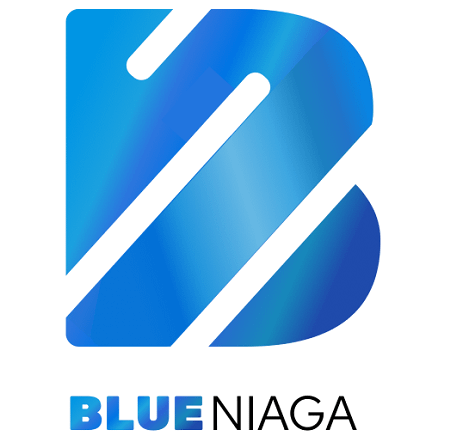Did you know that understanding customer behavior is like having a roadmap to success in today’s fast-paced market? Heatmap analysis might just be the key tool you’re missing in unlocking valuable insights into Malaysia’s market trends. This powerful technique not only helps businesses visualize how users interact with their digital platforms, but it also reveals crucial data that can drive strategic decisions.
What is Heatmap Analysis?
At its core, heatmap analysis transforms data into a visual format, using color gradients to indicate varying levels of user engagement. This allows businesses to see at a glance where users are clicking, scrolling, or spending the most time on their websites or applications. In Malaysia’s bustling digital landscape, where competition is fierce, this insight is invaluable.
Why It Matters in Malaysia’s Market
Malaysia’s e-commerce and digital marketing sectors have seen rapid growth, particularly following the pandemic’s shift to online interactions. Companies that can glean actionable insights from user behavior are often the ones that thrive. By employing heatmap analysis, businesses can:
- Identify popular areas of their websites
- Uncover elements that attract attention or confuse users
- Optimize user experience to boost conversion rates
- Make informed decisions on content placement and design
Now, let’s dive deeper into how heatmap analysis can be applied effectively in the Malaysian market context.
Types of Heatmaps
Before getting into the implementation, it’s essential to understand the different types of heatmaps available, each serving a unique purpose:
1. Click Heatmaps
Click heatmaps display where users click on a webpage. This information helps identify popular links or buttons while also highlighting areas that may be overlooked.
2. Scroll Heatmaps
These maps show how far down a page users scroll. Understanding scrolling behavior reveals whether users are engaging with content further down the page or abandoning it early. This can guide decisions on where to place crucial content or calls to action.
3. Mouse Movement Heatmaps
By tracking mouse movements, these heatmaps provide insight into user attention and engagement. Areas where the mouse hovers often correlate with interest, helping to refine design elements for better interaction.
4. Attention Heatmaps
Attention heatmaps merge data from click and mouse movement heatmaps to give a comprehensive view of user engagement. This type can guide the placement of high-impact content.
Utilizing Heatmap Analysis in Malaysia
Now that we’ve established what heatmap analysis is and its types, let’s explore how Malaysian businesses can implement this tool effectively.
Step 1: Choosing the Right Tool
Numerous heatmap software solutions are available, including Hotjar, Crazy Egg, and Mixpanel. When selecting a tool, consider:
- The size of your website and the volume of traffic.
- Integration capabilities with your existing analytics tools.
- User-friendliness and customer support.
Step 2: Setting Up Your Heatmaps
Once you’ve selected a tool, setup is relatively straightforward. You’ll need to install a tracking code on your website or application. After that, start collecting data based on real user interactions.
Step 3: Analyzing the Data
This is where the magic happens! After gathering enough data, it’s time to dive into your heatmaps. Focus on the following:
- Look for patterns: What areas are getting the most clicks? Which sections are people ignoring?
- Identify trends over time: Are users’ interactions changing? Is there a noticeable shift in behavior during specific campaigns?
- Compare to business metrics: Align heatmap data with conversion rates and user feedback for a comprehensive view.
Real-World Examples in Malaysia
Let’s put this into perspective using local examples to illustrate the significance of heatmap analysis in Malaysia.
Example 1: E-Commerce Optimization
A leading Malaysian e-commerce platform utilized heatmap analysis to identify that their promotional banners were attracting significant clicks, while important product descriptions were often ignored. By adjusting their layout, they moved essential information higher on the page, leading to a 20% increase in conversion rates.
Example 2: Content Engagement
A Malaysian news website used scroll heatmaps to analyze user behavior on longer articles. It turned out that readers often dropped off after the second screen. This insight prompted them to make their articles more concise and to add engaging multimedia elements, enhancing reader retention and interaction.
Best Practices for Effective Heatmap Analysis
For Malaysian businesses starting with heatmap analysis, here are some best practices to keep in mind:
- Focus on User Experience: Always prioritize the end-user experience when interpreting heatmaps. What insights can help make navigation smoother and more intuitive?
- Test with A/B Testing: Use heatmap data in conjunction with A/B testing to validate your changes. This amalgamation will provide robust insights into what resonates with your audience.
- Regularly Update Your Data: The digital landscape is ever-changing. Regularly review and refresh your heatmap data to adapt to evolving user behaviors and market trends.
Heatmaps and Data Privacy
As we delve into user behavior analysis, it’s crucial to address data privacy concerns. In Malaysia, complying with the Personal Data Protection Act (PDPA) is vital. Always ensure that your heatmap tools respect user privacy and provide transparency about data collection practices.
The Future of Heatmap Analysis in Malaysia
As technology advances, heatmap analysis will only get more powerful and accessible. With the rise of artificial intelligence and machine learning, we can expect even more refined analytics that provide deeper insights into consumer behavior.
As Malaysian businesses continue to adapt and evolve, incorporating heatmap analysis into their digital strategies will be essential for staying competitive.
What’s your perspective? Have you considered using heatmaps in your strategy, or are you already leveraging this insightful tool? The possibilities are endless when it comes to unlocking deeper insights into user engagement and preferences. By tapping into this valuable resource, businesses can fine-tune their strategies to align more closely with market demands, ultimately leading to a more engaging user experience and increased growth opportunities.


